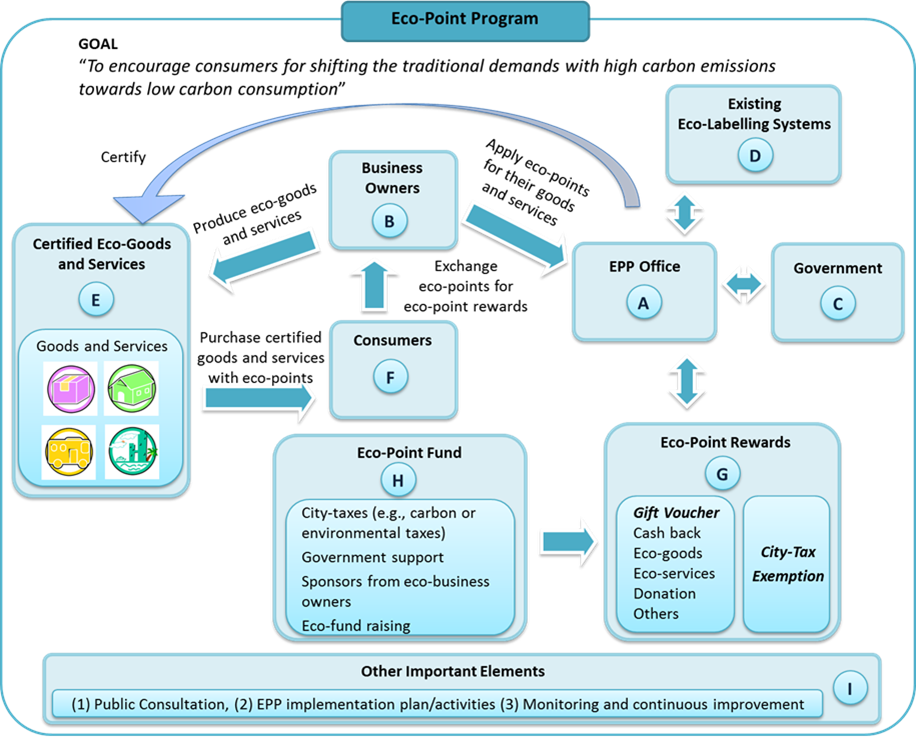The EPP framework comprises of important EPP elements including main stakeholders and their relationships with certified eco-points, eco-point rewards and eco-point as illustrated in Figure below. So as to encourage the shift in demand towards low carbon consumption, it is crucial for eco-point consumers to understand how this program works.

Framework for the Eco-Point Program The EPP framework comprises of nine elements (from A to I). The EPP office (A) may be organized under collaboration among business owners (B), local communities and government (C). The formation depends on the readiness of relevant stakeholders and the need for EPP implementation. During the 1st step, the EPP office (A) will map the goals, targets, scope and boundaries of EPP implementation in collaboration with business owners (i.e. investors, manufacturers, retailers, etc.) (B) and government (C). In order to do so, it is important to assess the current status of low carbon schemes in the implementing area and communication with the existing eco-labelling systems (D) may be needed. In the 2nd step, the EPP office (A) will set labelling systems in collaboration with the existing eco-labelling systems (D), develop eco-point valuation approach and set up issuance process to certify the eco-points to eco-goods and services (E). The certified eco-goods and services (E) are applied (for eco-points) by business owners (B). In the 3rd step, when the consumers (i.e. citizens, tourists, etc.) (F) purchase the certified eco-goods and services, the eco-points can be collected and exchanged for rewards via business owners (B). In fact, the eco-point rewards (G) and funds (H) are organized by the EPP office (A). The EPP office will facilitate distributing the eco-point rewards (G) from the eco-point fund (H) to the business owners (B). The eco-point funds (H) may be combined financial incentives from various sources (i.e. initial support from government, sponsorship by business owners, taxation, etc.). The additional elements (I) are not linked with other elements (A to H) because they will make the linkages too complicated and lessen the communicability (the EPP principle) of this framework. Other important elements (I) include public consultation of the EPP during the EPP development phase, the development of EPP implementation plan and activities (during pre-implementation, implementation and post-implementation phases) and monitoring and continuous improvement of EPP by EPP office (A) and all relevant stakeholders. Finally, it should be mentioned that this framework is only an example for initial EPP establishment. In fact, there are two-way flows of all stakeholders relationship and only the most important (one- and two-way) flows are illustrated here. Specific details are further described throughout the initial APEC EPP guideline.
